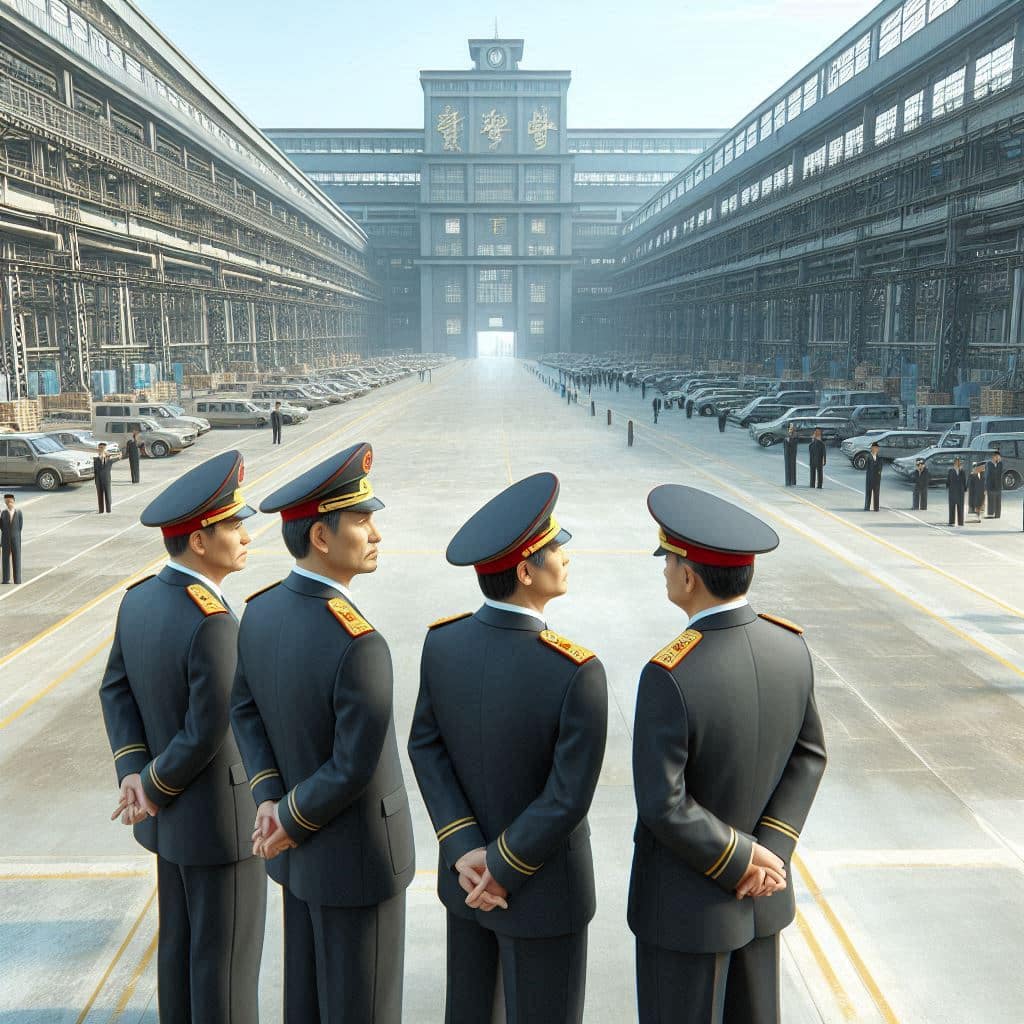The Woes of State Enterprise: How New York City’s subways became a nightmare
SUGGESTED



That’s because the subway system over generations is mostly a history of failure. The Big Apple’s subway system is an example of the woes of state enterprise. Indeed, the subways have been bad for so long that few know there was a time when the subways were “an engineering marvel.” It was a system in which private enterprise delivered excellent service, made money and improved the life of New Yorkers.
That was the case about a century ago when New Yorkers were proud of their subways and stockholders were delighted to own shares of the subways as well as private railroads.
Today everyone agrees the government run subways as well as the government run American passenger railroads are a mess. But there’s disagreement over how to fix them. There’s no debate that the state agency operating the subways has wasted billions. The government’s mismanagement over generations and different governments of both parties has hurt everyone. It has made riding them an awful, dangerous experience. But the problem is old and has festered for generations.
“There is no question our subways are in crisis after decades of underinvestment and inaction,” wrote New York City Comptroller Scott Stinger in a 2017 report, one in which he warned that riders are frustrated.
“The Metropolitan Transportation Authority (MTA),” wrote New York State Comptroller Thomas DiNapoli in a recent report, “is facing its greatest challenge in decades.” Riders, he warned “are abandoning the system for other transportation alternatives.” State reports, including DiNapoli’s “Financial Outlook for the Metropolitan Transportation Authority (MTA),” found New York’s state-run subways and railroads, including the Long Island Railroad and Metro North, also have “deteriorating service.” That’s something veteran riders have known for decades.
However, the biggest subway problem is one never mentioned in any government reports. It is historical illiteracy. It is also the lack of accounting for decades of poor city/state management; the essence of all government “enterprise,” a contradiction in terms. It is the ignorance of how the subway system went from an engineering marvel managed on a limited basis by the private sector to a nightmare controlled by political forces. The woes were the result of decades of destructive government regulation of private management companies and later direct government operation.
The myth of the failure of the private sector is propounded today by many New York political and media elites and around the country. These are leaders who support various government enterprise schemes. Strangely, some of these elites even claim to be friends of market forces.
Why their defence of hopeless government bureaucracies?
They insist, despite repeated government failures over generations, that only the public sector can do certain things such as run transportation companies in big cities.
One of the arguments against privatisation today by New York leaders is that running the trains is something “only the government can do.”
Their second argument against private transportation companies is an economic one. It is often made even by the supposed friends of free markets: Private lines can’t turn a profit. I have been told that even by representatives of the so-called laissez-faire Manhattan Institute. They insist subway privatisation isn’t an option. (This reminds me of the complaint of the Austrian economist Ludwig von Mises: “Even many of the critics of socialism sound like socialists.”)
“Subways don’t make money,” Nicole Gelinas, a senior fellow with the Manhattan Institute, told me years ago. But history doesn’t exactly support Gelinas. Indeed, private subway lines made money in their first years. Private lines also lost money later on. Their history is similar to private passenger railroads. They were once profitable but later they were forced into bankruptcy through overregulation from the 1930s to the 1960s. Curiously, this was the same story as private freight railroads. Yet, after many were in the red in the 1970s, private freight lines made a comeback in the 1980s after deregulation.
Although the New York City subways were never privately owned, private transportation companies operated in the first thirty-six years of the subways under a franchise contract with the city. The best of the private transportation companies, the Interborough Rapid Transit Company (IRT), generated strong profits over the first twenty years or so of the system. From its beginning in 1904, into the 1920s, the IRT was in the black.
For instance, in the IRT’s 1917 annual report, the transportation company reported net income of $23.2 million. That was an increase of about $1.5 million over the previous year. The IRT was also a good investment. It paid about some $7 million in dividends, according to the annual financial report dated June 30, 1917.
Even into the 1920s, when price controls and rising costs as a result of the inflation of World War I were starting to squeeze and eventually destroy profits, when the private operators unsuccessfully sued to raise fares, the subways still made money. However, IRT officials warned that, without the ability to raise prices, bad things would eventually happen and they did.
In the U.S. Supreme Court decision of 1929, Gilchrist vs. IRT, a decision that affirmed that the five-cent fare couldn’t be raised to seven cents, court papers documented something government enterprise would never do: the IRT still made money.
“For the current fiscal year ended June 30, 1928, the figures for the first six months are available, and show a net surplus amounting to $3,687,000, which exceeds the surplus for the corresponding six months of the fiscal year before by $1,609,000,” according to the court papers.
Can anyone ever imagine a government subway or railroad generating fat profits? I doubt it.
Still Gelinas on the right and others on the Left continue to argue for more public “investments” (call it for what it is – more spending and more debt) through still higher taxes on riders and drivers as well as more government subsidies. These include bond issues that have had bi-partisan support.
In the latter were three Second Avenue transit bond issues over a half century. Each was supposed to ensure a new Second Avenue Subway that would cover Manhattan. The history of this problem plagued line is an expensive joke played on New York taxpayers. The Second Avenue Subway now operating is a shell of the original project promised in the 1940s. Three stops out of the projected 18.
The MTA, along with other government agencies running trains, buses and other modes of transportation should be consigned to the ashcan of history. But this can only happen when one understands that the constant failures of the subways or Amtrak aren’t just today’s headlines (Amtrak officials promised big profits when they took over in the 1970s. Government subway advocates promised the subway system would at least break even back in the 1940s, long forgotten broken promises). They are a historical pattern that will repeat as long as various levels of government directly or indirectly control transportation companies. The system also survives as long as most people know nothing of the disastrous history of state enterprise (No worries. This article and others like it have been rejected almost everywhere by state enterprise media elites).
Various levels of government are doing what they have done many times since the government formally took over the subways in the 1940s: they will provide billions more in tax money for the already overleveraged MTA. The latter is a flawed state agency. It has its headquarters in the most expensive part of the city in midtown Manhattan.
Defenders of the current state-run system often say the private sector failed in the New York City subways. And it’s true that toward the end of the private management era in the subways, these companies were losing money, and that service was declining. Therefore, government enterprise supporters say, it should have no part in the system.
However, even most subway historians—who almost all argue the subways must continue under public control—agree that in the first years of the subways private management companies were a huge success; that this was a golden era for the subways.
The latter was roughly the first 20 years of the system, from 1904 to roughly the mid-1920s when the private management systems in the subways were essential. Indeed, they concede the construction of these lines would have been impossible without private funding because the city was reaching its debt limits. But the excellence of the privately constructed system was more than financial. The original subway – like the beginning Pennsylvania Railroad or New York Central, system – was remarkable.
The first subways began in Lower Manhattan and went several miles uptown. They were considered “an engineering marvel,” many have written. Indeed, New Yorkers had been “once enormously proud” of their subways, wrote Robert Caro in his biography of mega builder Robert Moses, “Power Broker.” The first subways also made money. That is, until price controls later destroyed them. The first subways also made the city more livable.
This was detailed in the book “Tunneling to the Future: The Story of the Great Subway Expansion That Saved New York” by Peter Derrick, who worked as an MTA consultant.
He wrote that the first subways, the subways run by private management companies, allowed people to move from slums near their workplaces in lower Manhattan to healthier neighbourhoods uptown or in other boroughs such as the Bronx, Brooklyn or Queens.
Most New Yorkers loved the subways, Caro wrote of the glory days before the subways started going down under government control in the 1950s and 1960s. But before then, the system’s success not only helped develop the city’s economy; a well-run subway system helped clear slums.
As we suffer with more and more socialist policies in the nation and in New York, we have more and more subway delays, at the same time as Amtrak goes into the transportation abyss. It is up to us—the riders, the overtaxed citizens and those who believe in private property—to learn the simple lesson of the history of government transportation companies in New York City and in the rest of the nation.
There are no profits and will never be any until the government gets out of the transportation business. Samuel Gompers, a conservative labour leader of the last century, said that the greatest crime capitalists could commit against working people is “not making money.” This no profits charge could be made against generations of New York leaders who fought for greater and greater controls of the subways but without anyone holding them accountable for why the E-train is late, why crime is out of control underground and why taxpayers shell out more and more. Today the state system is a mess. Even supporters agree, it is a drag on the economy.
Stringer, a former city comptroller very critical of the subways but certainly not in favour of any privatisation, said in his report that poor subway service hurts the area’s economy. He said losses range “from $170 million to $389 million” a year.
There’s no hope of changing that until the revolution of 1940 is reversed and government enterprise, whatever form it takes, is viewed as what it is and always been: An egregious, pricey failure.
Gregory Bresiger is a former New York Post business reporter and Traders Magazine editor, who rode the subways for over 40 years before moving away from New York City. This is an excerpt from his book on government enterprise.



